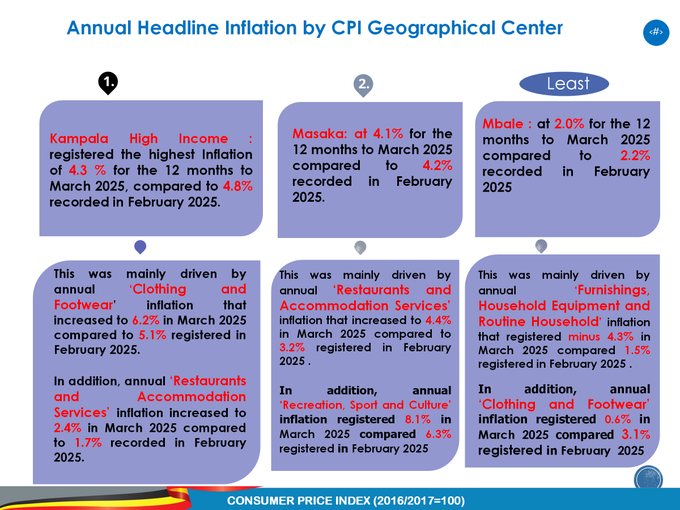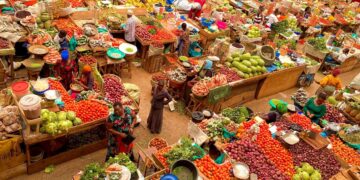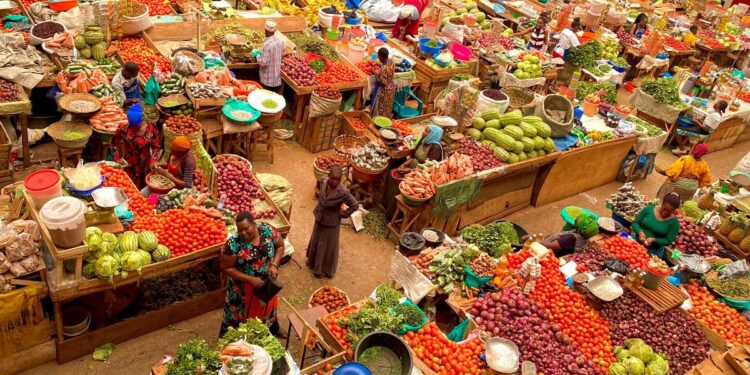Uganda’s annual headline inflation dropped to 3.4% in March 2025, down from 3.7% in February, signalling an easing of price pressures, according to the Uganda Bureau of Statistics (UBOS).
Core inflation, which excludes volatile food and energy prices, also fell from 3.9% to 3.6%.
The decline was driven by reduced inflation in services and other goods. Annual services inflation fell to 4.9% from 5.4%, while other goods inflation declined slightly from 2.7% to 2.6%.
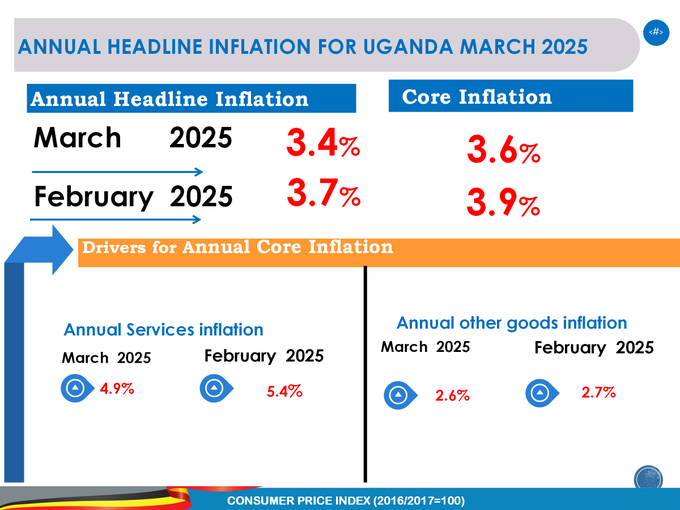
Monthly inflation figures also showed improvement. Headline inflation decreased by 0.2%, and core inflation dropped by 0.1%. Price increases were noted for maize flour, live chicken, refined oil, green pepper, passion fruit, and pineapple, while firewood and charcoal prices declined. Transport, hotel and lodging, rice, fish, matooke, cassava, onions, mangoes, and Irish potatoes experienced slower inflation.
Retail Prices and Regional Inflation Trends
Retail prices varied across commodities. Maize flour rose from 2,444 UGX to 2,519 UGX per kilogram, local chicken increased from 18,400 UGX to 18,746 UGX per kilogram, and green pepper surged from 3,261 UGX to 4,506 UGX per kilogram. However, refined oil and petrol saw slight declines.
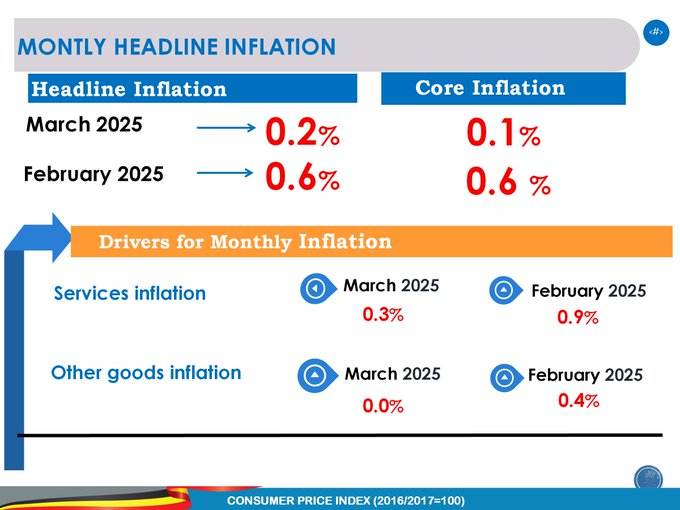
“Passenger transport by road, hotel & lodging, rice, fish, matooke, cassava, onion, mangoes and Irish potatoes prices registered a slowed inflation in the year ending March 2025,” said UBOS Principal Statistician, Samuel Echoku.
Inflation rates also varied by region. Kampala’s high-income earners faced the highest inflation at 4.3%, followed by Masaka at 4.1%, while Mbale recorded the lowest at 2.0%. The rise in Kampala’s inflation was linked to higher costs in clothing, footwear, and accommodation services.
Echoku emphasised that while inflation trends appear positive, external factors could still influence prices.
He urged continued vigilance to maintain economic stability, with the government expected to monitor inflation closely and implement necessary measures.
